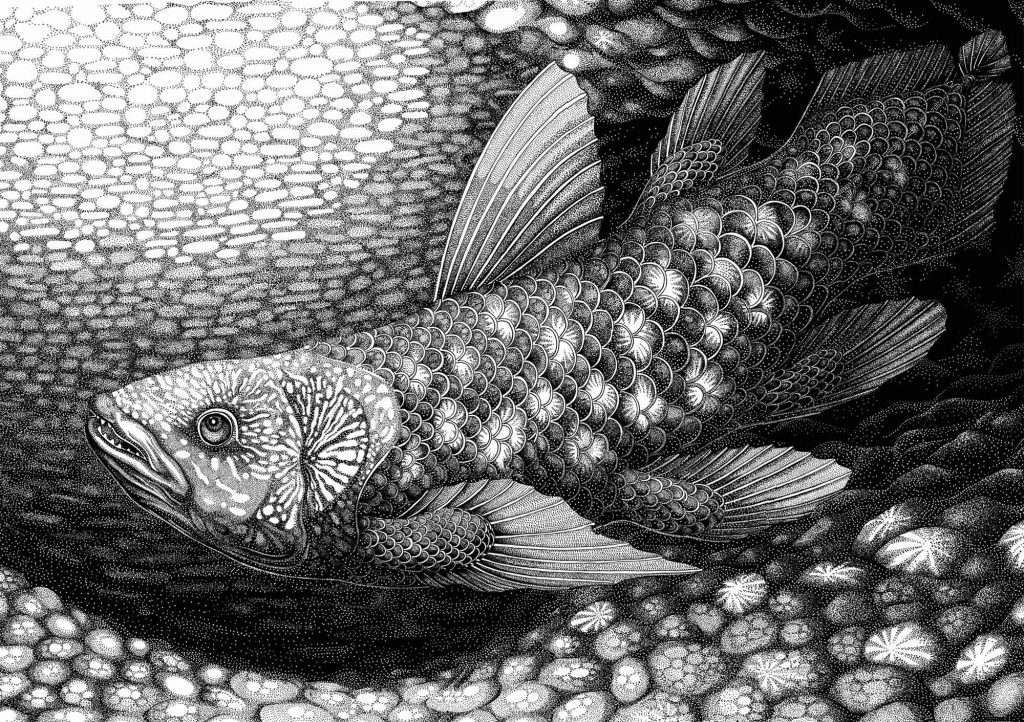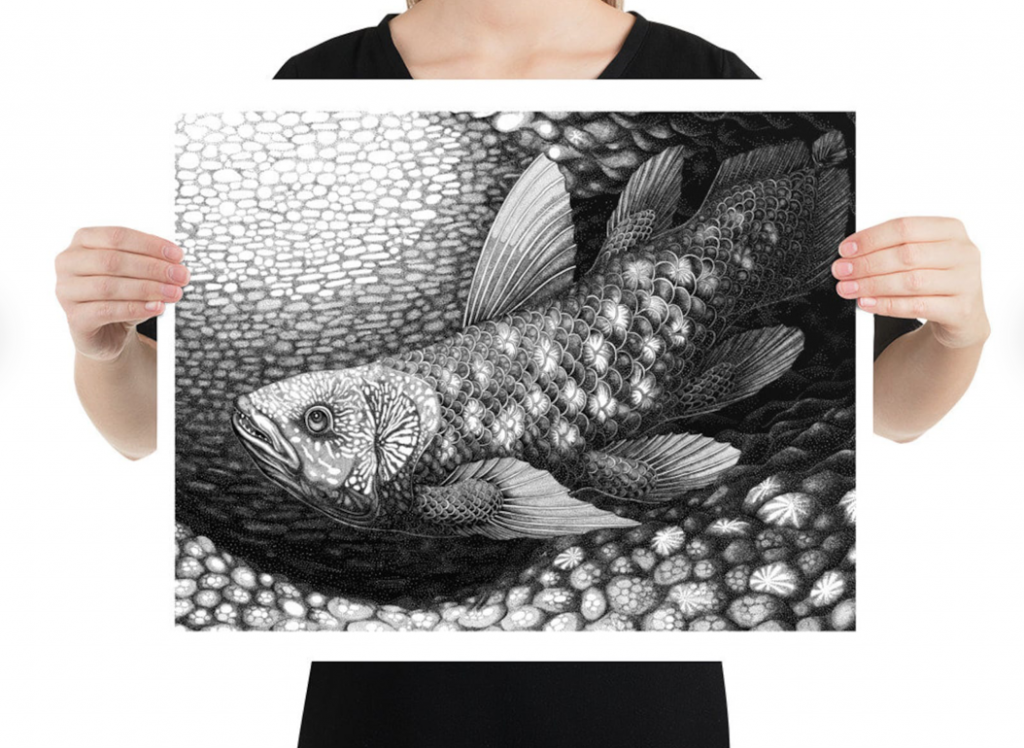Old Fourlegs
(59,5 x 42 cm, Ink and Pen on Paper, 2022)

“ I could not have been more surprised had I seen a dinosaur walk down the street”The coelacanth is a very special fish, and very close to my heart as the first specimen ever found is preserved in the fish building next to where I studied ichthyology at Rhodes University, South Africa. Belonging to an ancient lineage, going back 360 million years and thought to have gone extinct at the same time the dinosaurs disappeared, scientists couldn’t believe their eyes when one was found by a fishing vessel off the coast of East London, SA, in 1938. The coelacanth belongs to the lobe-finned fish, the Sarcopterygii -the fins are supported by bone and have fleshy appendages. While it was found that lungfish are a more direct ancestor to tertrapods than coelacanths, the way that coelacanths swim closely resembles the gait of animals walking on land (alternate moving pattern of the front and back pairs of fins). They are cave dwellers in the day and generally only go out to hunt in the late afternoon and night, feeding on small fish and invertebrates, equipped with an electric organ found close to their snout, which is unique to them among the fishes, and likely serves in the detection of prey. They mature late (at age 16 to 19) and give birth to live young, after pregnancies thought to last up to 3 years, the longest gestation period recorded for any vertebrate. Their slow reproduction and lengthy generational cycles make them vulnerable to ecological threats such as bycatch and habitat destruction and the African coelacanth is listed as threatened under the Endangered Species Act.
Prints available in my Etsy shop:
